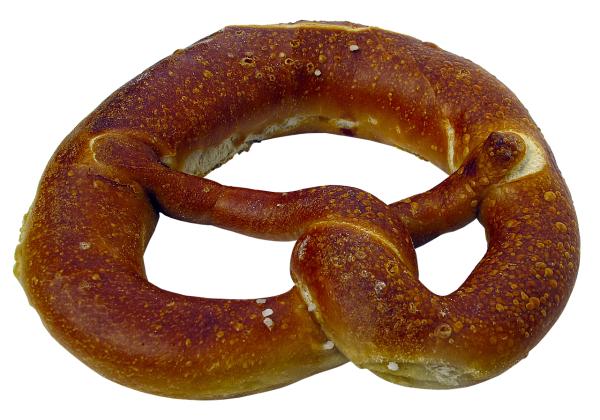Obesity continues to rise, affecting nearly every age group. In 2022, in a global population of 8 million, roughly 10% were obese – 504 million women and 374 million men. The only exceptions were observed in South and Southeast Asia countries and certain age and gender groups in sub-Saharan African countries. The ramifications are multifaceted, from the healthcare sector, which is tasked with managing an increasingly susceptible to non-communicable chronic diseases, to the economic sector, which faces the strain of a diminished productive workforce.
There are many well-founded approaches to this epidemic, including promoting increased physical activity, adopting healthier dietary habits, personalized dietary planning, moderation in consuming high-energy-density foods, and, when needed, considering drug therapies or bariatric surgeries. Other hypotheses seem promising in theory but lack effectiveness in practice, including interventions like altering the obesogenic environment, implementing taxes on sugary beverages, and modifying the nutritional composition of products.
While much of the debate revolves around nutritional composition, portion, and unit size are often overlooked despite their crucial impact on our daily intake.
Portion size effect - 'the more offered, the more consumed.”
Portion size denotes the weight or volume of what we eat. Does enlarging portion sizes lead to higher calorie consumption? And if it does, how does this phenomenon impact our decision-making?
The assumption that increasing portions leads to higher calorie intake, the portion size effect, is nuanced by various factors, including:
- Palatability of the food
- Energy density
- Individual's hunger and satiety levels
- Pleasure derived from eating
- Prevailing social norms
Considering these complexities, it seems plausible that enlarging portions leads to greater caloric consumption.
A study in Appetite explores the potential mechanisms underlying the portion size effect.
- Plate size: The difference between the size of the plate or bowl and the amount of food consumed, the visual cues seem to mediate how much we consume and may impede accurate judgment of consumption. Nevertheless, it remains uncertain whether this impaired judgment directly affects our actual intake.
- Unit, package, and container size: Factors such as the unit size, shape, number of pieces, and volume of the container all influence our perception of the amount of food present and, consequently, may impact consumption.
- Anchoring and adjustment: In our daily eating, the size of the initial portion served can serve as a reference point for determining our consumption, influencing our judgment of what constitutes an appropriate amount to consume for a given food or meal. [1]
- Equally significant is the discovery that our portion size is partly a learned response influenced by past experiences with specific foods. This notion finds support in studies of satiety expectation, where adults tend to choose larger portions of foods when they anticipate they will offer less satiety – they will be hungry again sooner.
- There is a close relationship between portion size and reward, possibly influenced by the perceived satiety potential of the food.
A new study
A new study again reported in Appetite, sought to investigate the relationships between portion size and consumption, in this instance, pretzels.
75 volunteers from a participant pool maintained by the Sensory Evaluation Center at Pennsylvania State University, aged 22 to 60 years, were randomly assigned to a sequence of snacks in the laboratory once a week for three weeks. Each snack comprised a cup of water and a plate of 70g of pretzels (PR), which could be consumed ad libitum (as much as desired). The size of pretzels varied at each session, with options including small (0.5g), medium (1.5g), and large (10g).
Before each session, participants were asked to rate the expected effects of the snack on hunger, thirst, consumption forecast (i.e., how much they anticipated eating), and satiety. They ate a single pretzel, rating their liking of it before freely consuming the desired amount. Participants were instructed to refrain from using cell phones during the test to minimize distractions, and stickers were placed on their faces to aid in the behavioral notation of “feeding microstructure” by the research team.
Consuming those large pretzels resulted in:
- 31.0% higher intake of food grams compared to the small one, and 21.6% higher intake compared to the medium one.
- 43.5% more energy intake than the small one and 32.8% more energy than the medium one.
- An increased eating rate and larger bite size. Numerous studies have shown that ingestion rate is a key predictor of energy intake, where faster is more.
- Less sodium consumed. (Small pretzels provided a larger total surface area for salt)
- Being less satisfied, the small pretzels were most enjoyed. There were no significant effects on hunger ratings, consumption forecasts, or satiety ratings.
The authors conclude that unit size is a more significant predictor of consumption than liking alone; pretzel size influences “oral processing behavior.” They also point out that subtle differences in size are insufficient to cause significant effects on food intake. This explains why the medium pretzel, only three times larger than the small pretzel, did not show significant effects compared to the large pretzel, which was 20 times larger. [2]
The applicability to the real world may be limited by the use of an isolated sensory booth and the presence of cameras, which do not reflect the typical context of pretzel consumption.
Does size matter?
Even though these findings contribute to our understanding of the relationship between portion size and increased caloric intake, exploring how these effects manifest in the real world remains crucial.
Portion control strategies to reduce caloric intake alone do not guarantee weight loss, and they are not a silver bullet solution to the problem of obesity. Weight loss requires a sustained caloric deficit, which may not necessarily be achieved solely by consuming smaller snacks. Effective weight management requires a comprehensive strategy addressing various factors, including diet quality, physical activity, mindset, and lifestyle habits – elements that are universally recognized as beneficial for overall health.
So, what's the bottom line here? While portions and unit size are often overlooked, it’s becoming increasingly evident that grasping their dynamics is essential for combating obesity and fostering healthier eating habits. However, it's crucial to view these unit measurements as the finishing touches of a weight loss process rather than as rigid guidelines that must be followed without question.
[1] In this context, the 'anchoring and adjustment process' refers to a cognitive shortcut used to estimate uncertain quantities based on a provided anchor (such as a limit, value, or image). Individuals initially assess whether the anchor is too high or too low and then gradually adjust their estimation away from it.
[2] The authors suggest that individuals aiming to reduce caloric intake while maintaining a moderate sodium content should opt for medium-sized pretzels, which promote lower caloric consumption than large ones and contain less sodium per serving than small ones.
Sources: Worldwide trends in underweight and obesity from 1990 to 2022: a pooled analysis of 3663 population-representative studies with 222 million children, adolescents, and adults. Lancet. DOI: https://doi.org/10.1016/S0140-6736(23)02750-2
Mechanisms of the portion size effect. What is known and where do we go from here? Appetite. DOI: 10.1016/j.appet.2014.11.004.
Unit size influences ad libitum intake in snacking context via eating rate. Appetite. DOI: 10.1016/j.appet.2024.107300.




